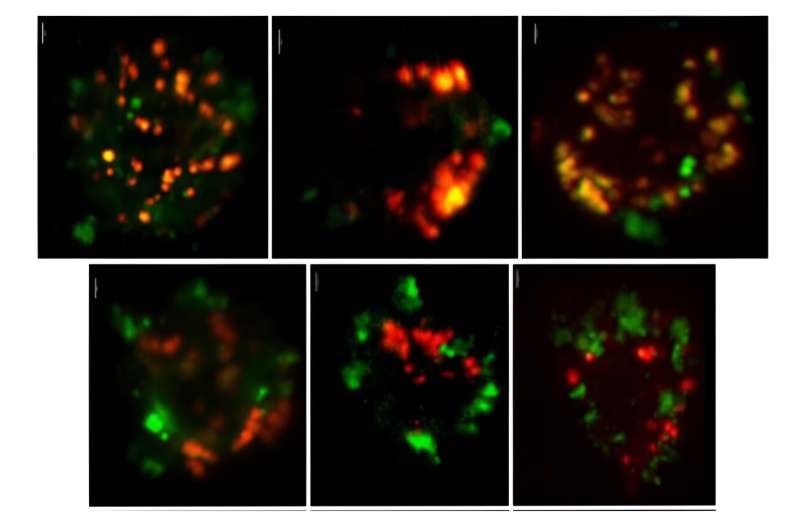This article has been reviewed according to Science X's editorial process and policies. Editors have highlighted the following attributes while ensuring the content's credibility:
fact-checked
peer-reviewed publication
trusted source
proofread
Study identifies new pathway to suppressing autoimmunity

Researchers at Stanford University School of Medicine, Yale University School of Medicine, and the Hospital for Special Surgery Research Institute have uncovered new details about how the immune system prevents the production of antibodies that can recognize and damage the body's own, healthy tissues.
The study, to be published September 29 in the Journal of Experimental Medicine (JEM), also reveals how this process is impaired in autoimmune disorders such as systemic sclerosis and systemic lupus erythematosus and suggests potential new strategies to treat these diseases.
B cells are a type of white blood cell that help to fight off infections by producing antibodies capable of recognizing foreign molecules, known as antigens, produced by invading pathogens such as bacteria and viruses. But some B cells generate antibodies that recognize "self-antigens" produced by the body's own cells, potentially causing the immune system to attack healthy tissues by mistake, leading to a variety of autoimmune diseases.
To help stop this from happening, the immune system tries to eliminate self-reactive B cells by exposing them to self-antigens as they develop in the bone marrow. This process, known as central tolerance, is thought to be controlled by B cell receptors (BCRs) on the surface of the developing B cells. Cells with BCRs that bind to self-antigens are removed before they can exit the bone marrow and enter the circulation.
In the new JEM study, however, research teams led by Eric Meffre at Yale University School of Medicine and Franck J. Barrat at the Hospital for Special Surgery in New York report that central tolerance also depends on a receptor called TLR9. This receptor is located inside B cells in compartments known as late endosomes and is activated by binding to fragments of DNA.
The researchers discovered that depleting TLR9 impairs central tolerance and causes mice to produce increased numbers of self-reactive B cells and antibodies. Meffre and Barrat's teams found that TLR9 activity is also reduced in the B cells of patients with systemic sclerosis, an autoimmune disease that damages the skin, joints, and internal organs. Similar decreases in TLR9 activity have previously been observed in lupus patient B cells as well.
The researchers determined that this reduction in TLR9 activity is due to a protein called CXCL4, which, like TLR9, can bind to DNA fragments. CXCL4 levels are elevated in patients with systemic sclerosis and lupus, and the researchers found that, when it binds to DNA fragments, CXCL4 prevents them from being delivered to late endosomes, where they would normally be able to activate TLR9 and induce B cell tolerance.
"Our data challenge the current paradigm that BCR signaling alone is responsible for the deletion of self-reactive B cells in the bone marrow, since we demonstrate that TLR9 signaling plays an essential role in the establishment of central B cell tolerance," says Meffre, who is now a professor at Stanford University School of Medicine.
"Correcting defective TLR9 function in B cells from patients with systemic sclerosis and perhaps other autoimmune diseases, potentially by neutralizing CXCL4, may represent a novel therapeutic strategy to restore B cell tolerance."
More information: Elif Çakan et al, TLR9 ligand sequestration by chemokine CXCL4 negatively affects central B cell tolerance, Journal of Experimental Medicine (2023). DOI: 10.1084/jem.20230944. rupress.org/jem/article-lookup … 10.1084/jem.20230944



















